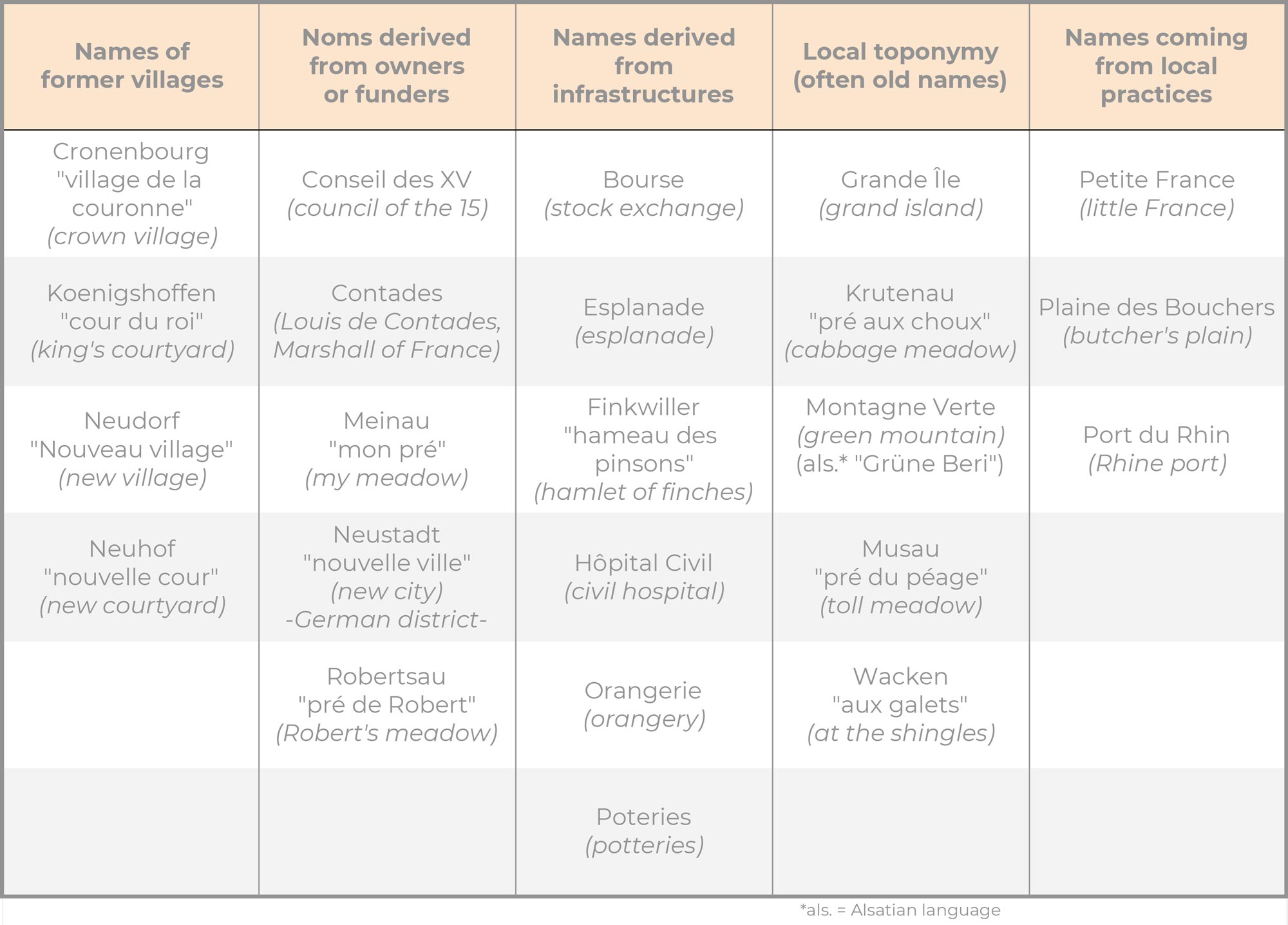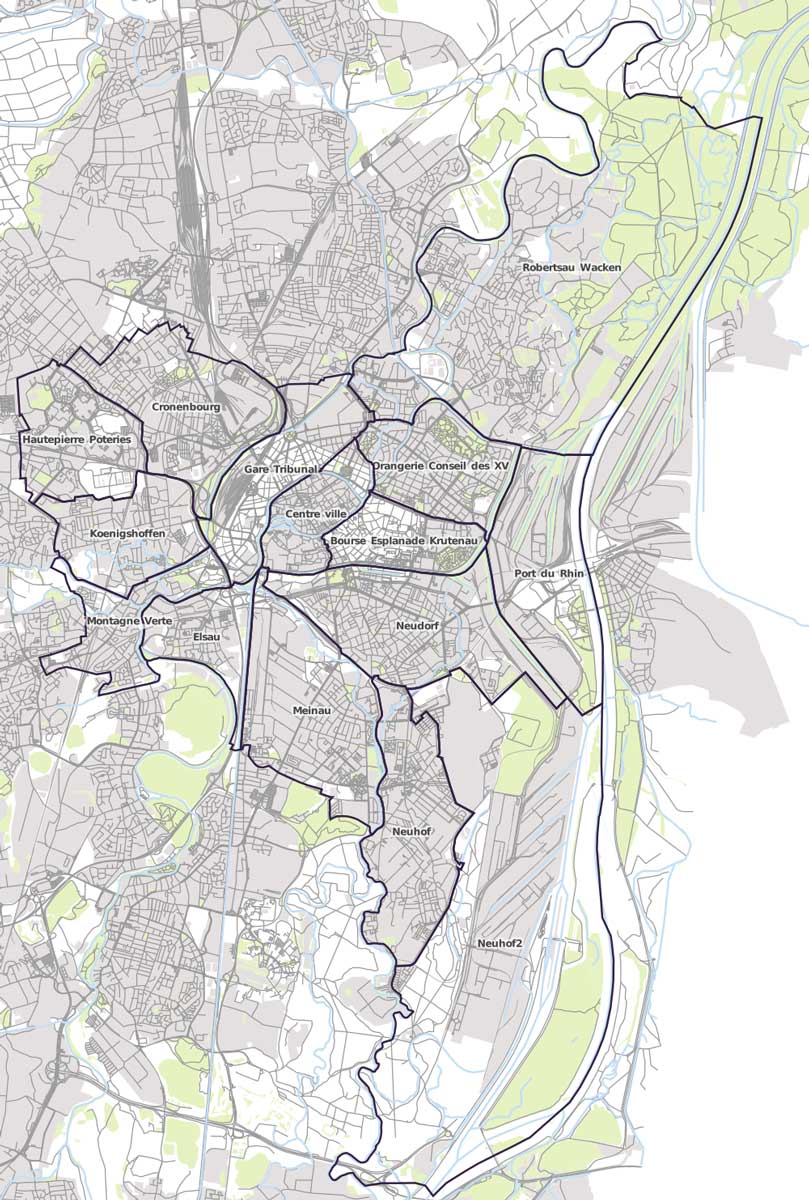The districts’ names (part 1/4)
– Diverse origins
April 30th 2019, by Leo
Strasbourg is made up of many districts whose names raise questions for many people. Mostly, it happens when you live there and the district is not the obvious Great Island… We have ventured before into the origins and functions of Strasbourg’s street names in some previous articles (Street names in Strasbourg: The origins, From the Castrum to the Renaissance, Politics and propaganda).
Now’s the time to delve into the districts’ names, something we more rarely have the chance to talk about during our free walking Tours. These names indeed appear along the way as they are born and thus follow a historical logic. There is also an aspect of practical designation: they should help you find your way easily!
I offer you here quite a simple (and simplified) chart to categorize the origins of the districts’ names. I list here an unfinished number of districts because many of them do not fit with any administrative designation, they exist only in common use. The administrative aspect will never supersede such an everyday use that allows us to make some places our homes (“t’heim” in alsatian) in a much more intimate way. Feel free to suggest another name below in the comments, so that we can add your own place!
In the following chart, I have suggested translations for some of the districts’ names that are alsatian in origin. For a whole selection, you can see the “au” suffix (pronunciation: ao). The older spelling is “aue“, always in the plural, and which appears to be “some wet land, periodically flooded, grassy, often used for grazing”. I took the liberty to shorten it to “meadow” for readability’s sake.
Table of the origins of the names of Strasbourg districts:




